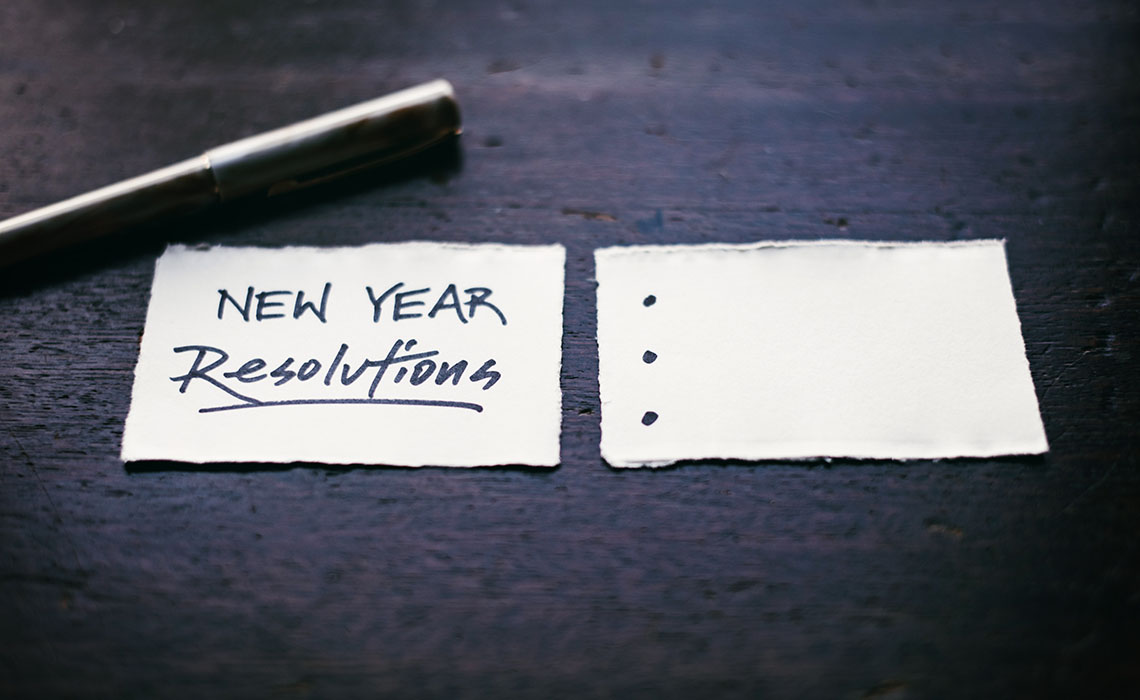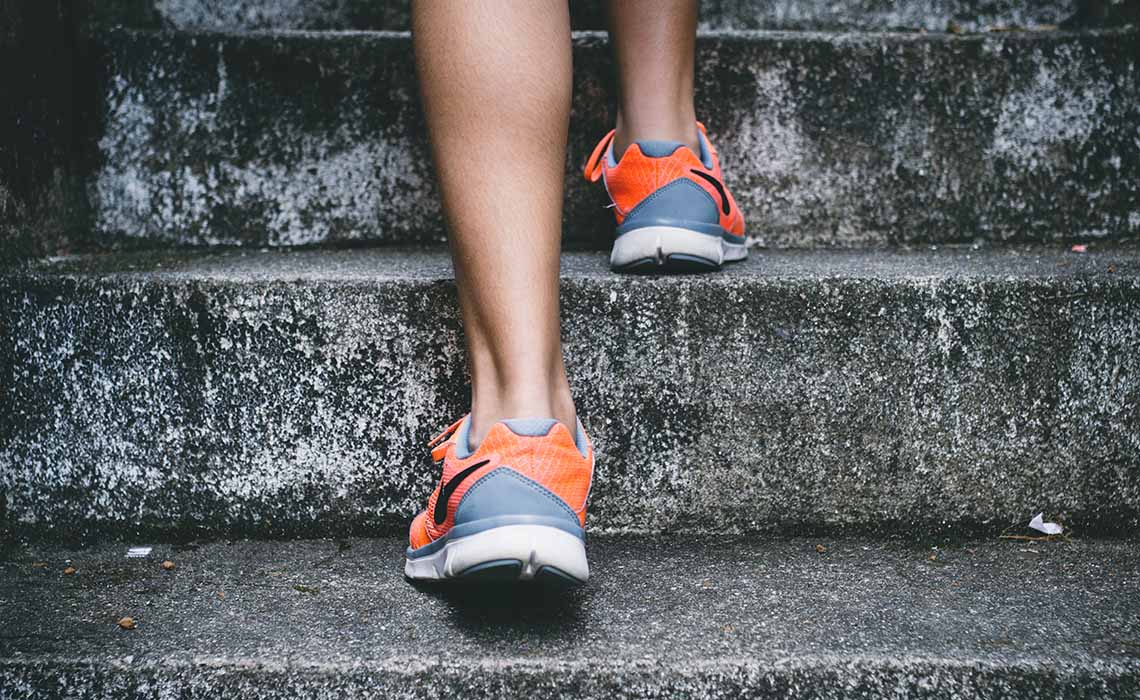Navigating the new year

As we settle into 2024, many people are asked about their new year’s resolutions. If it doesn’t come up in small talk conversations, you’re likely to see “new year, new me” marketing at some point on social media.
Resolutions marking the start of a new calendar year are not new; in fact, they’ve been around for thousands of years. The ancient Babylonians are the first recorded civilization to celebrate a new year around 4,000 years ago. Resolutions and the rationale behind them vary from person to person but they are typically a promise or commitment to changing a bad habit, such as giving up smoking. Sometimes they are about adopting new habits like training for a marathon or working out more.
For those who don’t aspire to make big changes with a new year, there is still pressure to make a resolution. “For the most part, it is a cultural script that we follow. It is the social norm to have some sort of resolution,” explains Dr. Dan Devoe, PhD, assistant professor in the Department of Psychology.
Even if you don’t cave to the social pressures of making resolutions, he explains, there is a societal belief that we need to be constantly improving ourselves in some way. “We always feel that we need to be better or that we need to be doing something more and a new year gives us a deadline.”
According to Forbes.com, the most common resolutions are improved fitness, improved finances, improved mental health, weight loss and improved diet.
Dr. Elaine Ori, PhD, assistant professor in the Department of Health and Physical Education, says that tradition and societal pressure combined with western beliefs and ideals around physical appearance can create a lot of internal pressure, especially in the first few weeks of January following a holiday season often associated with excessive consumption.
“Innately, we know that exercise is good for us and so is eating healthy. But the bigger part of it is that there is a western ideal that really panders to this idea of an ideal physique,” she says, adding that there’s also a misconception that this ideal physique is desirable and achievable for everyone.
In western culture the general ideal physique for women is slim with some muscle and low body fat, and for men it is highly muscular with low body fat. For many people the emotional connection to the ideal physique is mismatched meaning there is an erroneous idea that “if you look a certain way you will be happier, you will feel more positive emotions.”
Making resolutions that stick
Regardless of what type of resolution you make, breaking your goal into achievable steps is a key to success.
Devoe says goals are often very vague, and such resolutions as wanting to achieve financial freedom or lose weight are what he calls “dead person goals.”
“Those statements are elusive so you need to break them down into tangible, manageable steps where you feel like you are actually creating some sort of ground and achieving your goal.” The foundation for goal setting and making changes in your life should be the why. “Think about why you want to achieve that goal, what is it going to do for you? What is it going to do for you at the end of the day?”
Though, Devoe cautions, humans are creatures of habit and even with a strong motivation behind a goal, it can be hard to change lifelong behaviours.
“Just saying you are going to create an absence or avoid a behaviour really doesn’t do it, we have to adjust our entire environment and atmosphere in order to adjust for those particular things, whether it is something like caffeine or smoking,” Devoe says. “You have to go about changing your environment instead of just saying, ‘I am going to quit.’ ”
Ori echoes this sentiment and puts emphasis on small steps in working towards a bigger goal. “The thing that people most often do is make these big ideas and claims that, for example, they’re going to run a half marathon by June, but they’ve never run before.”
If, for example, the goal is to exercise more, start with 10- to 15-minute bouts of increased activity. “When that sticks in a few weeks then start upping the ante. But it doesn’t have to be this great, sweeping all-or-nothing approach.”
Change is hard, she emphasizes, while also pointing out that those embarking on a resolution should be patient with themselves. “There’s going to be setbacks. Be gracious with yourself, with your time and your ability to get there. There are so many factors that contribute to whether a goal is achievable — from things that we can control like carving out time, to things that we have no control over such as our subjective support networks, meaning we might not have people in our lives who are supportive of a certain change.”
Devoe and Ori also agree that timing is another factor impacting the success of goals and resolutions. “Why the new year?” asks Ori. “Is now the best time to ask yourself to change one or two or more parts of your daily living, or could it wait a few more weeks?”
The first few weeks of January are usually a time when people are getting back into a routine, so pushing the goals and resolutions back by a few weeks might allow more opportunity to critically think about how to implement the steps you need to achieve whatever it is you are setting out to do.
Diet and exercise
If you’ve committed to making a resolution or goal, congratulations, you’ve taken the first step, says Dr. Jared Fletcher, PhD, associate professor in the Department of Health and Physical Education. “Preparation and your plan to change is one of the biggest hurdles,” he says.
For someone wanting to embrace a healthier routine or try something new, like Devoe and Ori he advises taking gradual steps instead of diving in full force. Especially when it comes to physical activity, Fletcher says you want to ensure it is a positive experience. Not only so that it is something you can sustain, but also to prevent injuries and burnout.
“We can get turned off from physical activity and exercise pretty quickly if we start too hard or we try to make it too complicated. These types of resolutions don’t need to be complicated. You don’t need a new expensive gym membership or a road bike worth thousands of dollars, you can start with a walk around the block.”

By approaching it this way, Fletcher says it has a better chance of slowly becoming a habit and looked at positively. “It starts at the preparation and goal-making stage. Then it moves to maybe doing it every once in a while. Eventually it’s actually part of your life and it's a formed habit.”
If someone has not engaged in any significant physical activity, even the slightest changes can make a big difference, according to Fletcher. “If you start with nothing, starting almost anything is going to start making you feel better and you’ll see those positive changes, psychologically and physiologically. Your health is going to improve.”
Healthy eating and nutrition often go hand-in-hand with exercise but like Fletcher, Dr. Lynne Lafave, PhD, says simplicity is key. The professor in the Department of Health and Physical Education says it is easy to be swept up in the excitement and pressures of a new year. “However, extreme thinking does not produce sustainable change plans,” she cautions.
“Ditch the fad diet,” Lafave says, and instead focus on a small, sustainable change that you can sustain over time. “Pick something that works for your needs and then work to keep that pattern in your life until it is a habit. That is the kind of commitment to your personal self care that will make a difference in your personal health and vitality.”
A few examples from Lafave are things like committing to preparing and making your lunch instead of buying takeout, making a meatless meal once a week or trying to eat three different green vegetables a day.
It’s not likely that any of these suggestions were resolutions that the Babylonians considered back in their day, but the “new year, new me” principle behind them all have not necessarily changed that much over four millenia.

